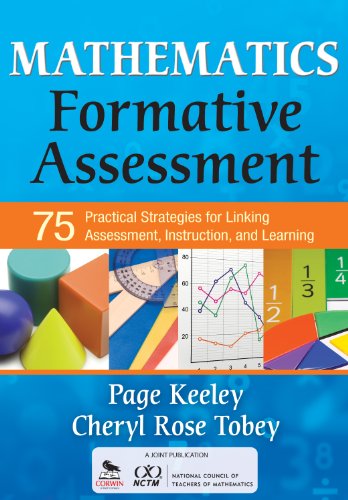Machine generated contents note: Preface Acknowledgments About the Authors 1. An Introduction to Formative Assessment Classroom Techniques (FACTs) What Does a Formative Assessment Classroom Look Like? Why Use Formative Assessment Classroom Techniques (FACTs)? How Does Research Support the Use of FACTs? Classroom Environments That Support Formative Assessment Connecting Teaching and Learning Making the Shift to a Formative Assessment-Centered Classroom 2. Integrating FACTs With Instruction and Learning Integrating Assessment and Instruction Assessment That Promotes Thinking and Learning Linking Assessment, Instruction, and Learning: The Mathematics Assessment, Instruction, and Learning Cycle (MAIL Cycle) Stages in the MAIL Cycle Engagements and Readiness Eliciting Prior Knowledge Exploration and Discovery Concept and Skill Development Concept and Skill Transfer Self-Assessment and Reflection Selecting and Using FACTs to Strengthen the Link Between Assessment, Instruction, and Learning 3. Considerations for Selecting, Planning for, and Implementing FACTs Selecting FACTs Selecting FACTs to Match Learning Goals The Critical Importance of Context in Selecting FACTs Implementing FACTs Starting Off With Small Steps Maintaining and Extending Implementation Using Data From the FACTs 4. Get the FACTs! 75 Mathematics Formative Assessment Classroom Techniques (FACTs) #1 A&D Statements #2 Agreement Circles #3 Always, Sometimes, or Never True #4 Card Sorts #5 CCC: Collaborative Clued Corrections #6 Comments Only Marking #7 Commit and Toss #8 Concept Attainment Cards #9 Concept Card Mapping #10 Concept Cartoons #11 Create the Problem #12 Every Graph Tells a Story #13 Example, Non-Example #14 Fact First Questioning #15 Fist to Five #16 Four Corners #17 Frayer Model #18 Friendly Talk Probes #19 Give Me Five #20 Hot Seat Questioning #21 Human Scatterplot #22 Is It Fair? #23 I Used to Think.But Now I Know #24 Justified List #25 Justified True or False Statements #26 K-W-L Variations #27 Learning Goals Inventory (LGI) #28 Look Back #29 Matching Cards #30 Mathematician's Ideas Comparison #31 More A - More B Probes #32 Muddiest Point #33 No Hands Questioning #34 Odd One Out #35 Opposing Views Probes #36 Overgeneralization Probes #37 Partner Speaks #38 Pass the Problem #39 P-E-O Probes (Predict, Explain, Observe) #40 A Picture Tells a Thousand Words #41 POMS- Point Of Most Significance #42 Popsicle Stick Questioning #43 PVF: Paired Verbal Fluency #44 Question Generating #45 Recognizing Exceptions #46 Response Cards #47 Same A - Same B Probes #48 Sequencing Cards #49 Sticky Bars #50 Strategy Harvest #51 Strategy Probe #52 Student Evaluation of Learning Gains #53 Student Interviews #54 Synectics #55 Terminology Inventory Probe (TIP) #56 Ten-Two #57 Thinking Log #58 Think Alouds #59 Think-Pair-Share #60 Thought Experiments #61 Three Minute Pause #62 Three-Two-One #63 Thumbs Up - Thumbs Down #64 Traffic Light Cards #65 Traffic Light Cups #66 Traffic Light Dots #67 Two Minute Paper #68 Two of Three Before Me #69 Two Stars and a Wish #70 Two-Thirds Testing #71 Volleyball, Not Ping Pong! #72 Wait Time Variations #73 What Are You Doing and Why? #74 Whiteboarding #75 Word Sort Appendix References Index .
Mathematics formative assessment : 75 practical strategies for linking assessment, instruction, and learning by Page Keeley. ISBN 9781412968126. Published by Corwin in 2011. Publication and catalogue information, links to buy online and reader comments.
